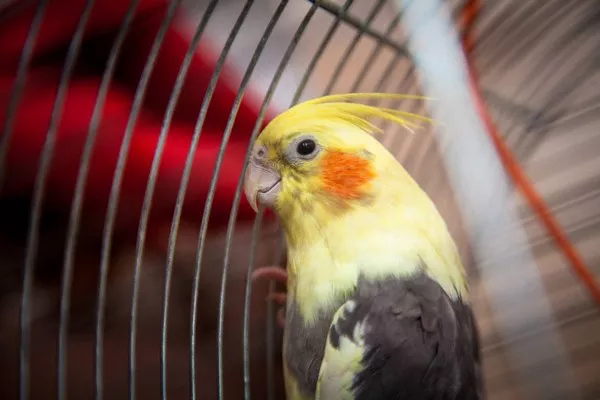Foxhounds are a popular breed known for their strong hunting instincts, boundless energy, and unwavering loyalty to their owners. As a breed, they are often associated with hunting, working in packs, and displaying a high level of independence. However, when it comes to their relationship with humans, a common question arises: Are foxhounds clingy? The answer is more complex than a simple “yes” or “no.” To understand whether foxhounds are clingy, we must consider their personality traits, history, training, and the way they interact with their human families.
1. Understanding the Foxhound Breed
Foxhounds are an umbrella term that typically refers to two different breeds: the American Foxhound and the English Foxhound. While these two breeds share many similarities, each has its unique characteristics. They were originally bred for hunting foxes, and this history has shaped much of their behavior, including their relationship with humans.
History and Purpose of Foxhounds
The American Foxhound was developed in the United States in the 18th century by crossing English Foxhounds with other breeds such as the French hound. The goal was to create a faster, more agile hound capable of pursuing foxes across the rugged American landscape. On the other hand, the English Foxhound has a long history in England, where it was used by hunting enthusiasts for centuries to chase foxes in packs.
Both breeds have a rich history of working in groups, often with little direct human interaction during hunts. Foxhounds are bred for stamina, speed, and the ability to follow a scent for long distances. This means they have a strong sense of independence, as their primary role in a hunt is to work alongside other hounds, not necessarily to bond closely with humans.
Physical Traits and Temperament
Foxhounds are medium to large-sized dogs, known for their sleek coats, strong builds, and excellent sense of smell. They are highly athletic, requiring a significant amount of exercise to stay happy and healthy. Because of their hunting background, foxhounds can have a stubborn streak and a strong prey drive. They are intelligent and can be independent, which might give the impression of aloofness at times.
Despite their independent nature, foxhounds are known for their friendly, sociable demeanor. They tend to get along well with other dogs and pets, as well as with people. While they may not always crave human attention as much as other breeds, this does not mean they are unfriendly or distant.
2. Are Foxhounds Clingy by Nature?
To determine whether foxhounds are clingy, it’s important to first define what “clingy” means in the context of dog behavior. A clingy dog is one that seeks constant attention from its owners, often following them around the house, demanding affection, and becoming anxious when left alone. Clinginess can be a sign of attachment, anxiety, or insecurity.
Independent but Affectionate
Foxhounds are not typically described as clingy. They are independent dogs by nature, due to their history as working dogs. They were bred to follow scents and focus on their tasks, often for long periods, without relying on human interaction. This means that while they can form strong bonds with their owners, they do not generally exhibit clingy behavior, such as constant attention-seeking or following their humans everywhere.
That said, foxhounds are not cold or indifferent. They can be affectionate and enjoy spending time with their owners. However, they do not typically demand constant interaction or attention. This makes them different from breeds like lap dogs or some toy breeds that may have a stronger desire for companionship.
Bonding with Humans
Foxhounds are known for being loyal companions. They can form strong bonds with their human families, especially when they are socialized and trained properly from an early age. This loyalty may manifest in seeking affection, but it is usually on their own terms. A foxhound may approach you for a cuddle or to sit near you, but it is not likely to demand attention at all times. They are comfortable being independent and content with being in the same room as you without being overly attached.
Unlike some breeds that are more prone to separation anxiety, foxhounds generally handle being alone quite well. Of course, this can vary depending on the individual dog and its training. Foxhounds may not feel the need to be in constant physical contact with their owners, which is why they are not typically considered clingy.
3. Factors That Can Influence a Foxhound’s Clinginess
While foxhounds are generally not known for being clingy, there are several factors that can influence a dog’s behavior and attachment to their owner. These factors include early socialization, individual personality, living environment, and training. Understanding these influences can help clarify whether a foxhound might be more inclined to seek constant attention.
Early Socialization
Early socialization plays a crucial role in a dog’s behavior and temperament. Foxhounds that are exposed to a variety of people, environments, and experiences as puppies are more likely to grow up confident and well-adjusted. Proper socialization can prevent the development of anxiety or fear-based behaviors, which could lead to clinginess.
A foxhound that has had positive experiences with people from a young age may be more affectionate and seek companionship. On the other hand, if a foxhound has not been socialized properly, it might develop attachment issues, which could make it clingier or more anxious when left alone.
Individual Personality
Just like humans, dogs have individual personalities. Some foxhounds may be more independent and aloof, while others may be more affectionate and want to be close to their owners. This variation in temperament is perfectly normal, and some foxhounds may have a stronger need for human companionship than others.
It’s important to understand that each dog is unique, and their behavior may not always align with the typical traits of the breed. Therefore, some foxhounds may display clingy tendencies, but this is not necessarily characteristic of the breed as a whole.
Living Environment
The environment in which a foxhound lives can also influence its behavior. Foxhounds that are kept in busy, active households may be more inclined to seek attention from their owners. If the family is engaged in activities or has other pets that demand attention, a foxhound might feel the need to be included and could display clingy behavior in response.
Conversely, if a foxhound is kept in a quieter, more solitary environment, it may be more content to spend time on its own. In this case, the dog may not exhibit clinginess but may be more inclined to entertain itself without seeking constant interaction.
Training and Routine
Training plays a significant role in shaping a dog’s behavior. Foxhounds that are well-trained and follow a routine are more likely to be calm and independent. Proper training can help prevent behaviors like separation anxiety, which could lead to clinginess. A consistent routine that includes daily exercise, mental stimulation, and quality time with their owners can help a foxhound feel secure and less likely to display clingy behavior.
Dogs that are not given enough mental and physical stimulation may develop anxiety or boredom, which can manifest as clinginess or other undesirable behaviors. Foxhounds, being active dogs, need regular exercise and mental challenges to stay happy. If they are under-stimulated, they might become more dependent on their owners for attention.
4. How to Encourage a Healthy Relationship with Your Foxhound
If you have a foxhound and are concerned about clinginess or want to build a stronger bond with your dog, there are several strategies you can use to encourage a healthy relationship.
Provide Regular Exercise
Foxhounds are high-energy dogs that need plenty of physical activity. Regular walks, runs, or playtime in a secure yard will help your dog release excess energy and prevent boredom. When a foxhound is properly exercised, it is less likely to become anxious or clingy.
Mental Stimulation
In addition to physical exercise, foxhounds need mental stimulation. Puzzle toys, scent games, and obedience training are excellent ways to keep their minds engaged. A mentally stimulated foxhound is less likely to develop separation anxiety or exhibit clingy behavior.
Encourage Independence
While it’s important to bond with your foxhound, it’s also essential to encourage independence. Avoid giving in to excessive demands for attention, and provide your dog with its own space to relax. Allow your foxhound to enjoy time alone in a comfortable environment, which will help it feel secure and independent.
Socialization and Exposure
Socialize your foxhound regularly with other dogs and people. This exposure helps build confidence and reduces the likelihood of attachment issues. A well-socialized foxhound will be more relaxed in different environments and less likely to become overly clingy.
Conclusion
In conclusion, foxhounds are generally not considered clingy dogs. Their independent nature, developed through centuries of hunting and working in packs, means they are more likely to enjoy solitude and self-sufficiency. However, foxhounds can form strong bonds with their owners and be affectionate on their own terms. While some foxhounds may display clingier tendencies, this is not a typical trait of the breed. By providing the right environment, exercise, and training, you can encourage a healthy, balanced relationship with your foxhound that fosters both independence and affection.
Related Topics:






















